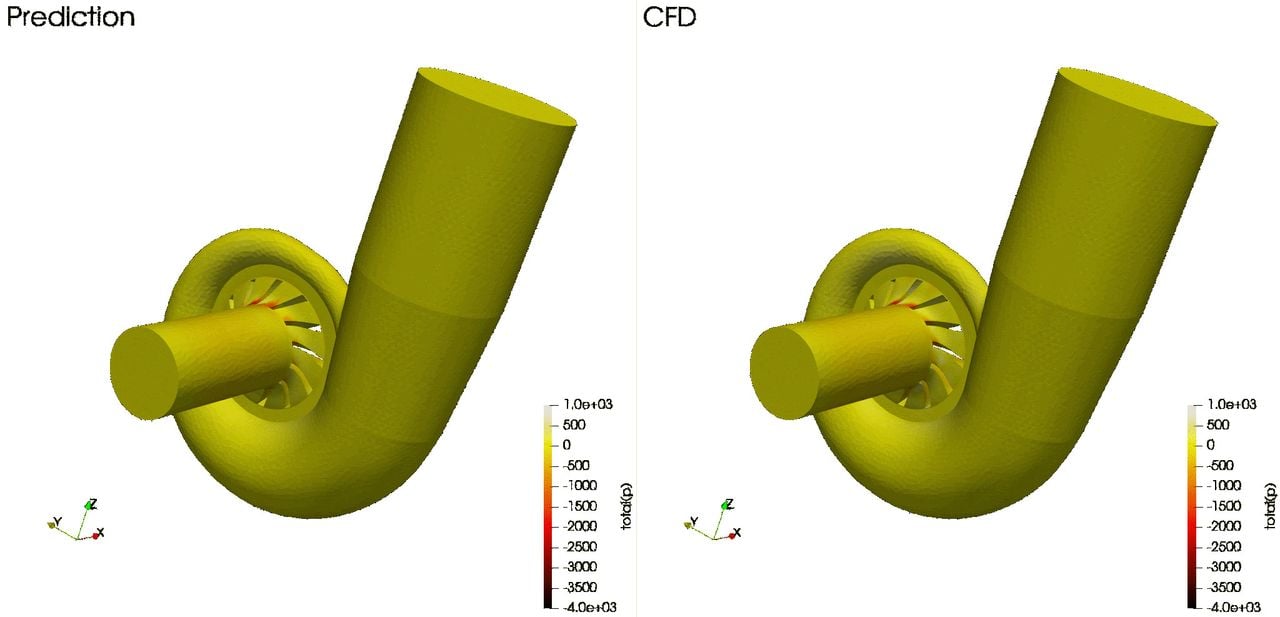
First impressions of SimScale’s AI-based physics prediction technology.
Early this morning, SimScale presented a webinar to debut what it calls “the first fully integrated and cloud-native AI-based physics predictions in simulation software.” The German-based engineering software company offers a completely cloud-native simulation platform via a software-as-a-service (SaaS) licensing model. All an engineer needs to access it is a browser and an internet connection.
The AI features are available to all SimScale users at no additional cost. SimScale partnered with Navasto to add AI to its online simulation platform. Navasto is also based in Germany, and offers AI technology that tackles engineering applications. Here are some take-aways, first impressions and thoughts on this announcement and the future of AI and simulation.
Takeaways of SimScale’s AI-Simulation Tool
SimScale sees AI as the future of simulation because they see it as a way to meet current engineering challenges, including:
- Optimizations to reduce costs, energy/material use and carbon emissions.
- Generative design.
- Product complexity.
- Mass customization.
- Digital twins.
The idea is to use AI to get quick results so that engineers can perform more simulations to meet these challenges. Instead of running simulations on thousands of generated designs, engineers run simulations on a hundred designs, use that data to train an AI machine learning (ML) model and then assess the remaining generated options. Once the model is trained, AI can act as an alternative to solvers such as FEA, CFD and other simulation techniques.
SimScale can now replace its simulation solvers with AI technology in any workflow it offers. As the platform is completely cloud native, so are the AI tools. And just as engineers can run a SimScale simulation on a browser, share it and collaborate with team members in real-time, the same is true for these AI models. Alternatively, APIs are offered to connect AI functionalities into third-party workflows.
The AI models are managed by SimScale users and customers. Though they are pretrained to a certain extent, reports SimScale to engineering.com, they still require some training from the user. SimScale offers workflows to train ML models using project and legacy data. However, a bring-your-own-data approach is used to train the models. The upside is that the models will be optimized to the users’ specific needs.
Some simulation examples demonstrated with the AI technology include:
- Vehicle impacts.
- Vehicle aerodynamics and drag optimizations.
- Centrifugal pumps.
- Stress and strain.
- Heat transfer of a CPU heat sink.
First Impressions of AI in Simulation
According to Steve Laine, application engineering manager at SimScale, “AI will do for engineering what the Internet did for engineering,” and revolutionize it. I do not doubt this to be the case. However, I see SimScale’s current iteration of AI-based simulation as a first step along that exponential curve. This gives the company a head start against competitors, but it comes with a significant drawback in the form of needing to train all the AI models. In essence, engineers require some ‘activation energy’ to get the AI-reaction started.
Read the rest of this story at ENGINEERING.com
